 This section of our web site deals with an interesting aspect of the whole Hungarian refugee movement to Canada. The students, staff and family members of the Sopron School of Forestry in Hungary were forced to flee their homeland in 1957 when the anti-Soviet Revolution failed. The Dean of the Sopron School of Forestry Kalman Roller sent letters to several countries explaining the necessity for a new home to allow the current students to complete their degrees. The Faculty of Forestry at UBC offered a place for the Sopron students to finish their forestry studies.
This section of our web site deals with an interesting aspect of the whole Hungarian refugee movement to Canada. The students, staff and family members of the Sopron School of Forestry in Hungary were forced to flee their homeland in 1957 when the anti-Soviet Revolution failed. The Dean of the Sopron School of Forestry Kalman Roller sent letters to several countries explaining the necessity for a new home to allow the current students to complete their degrees. The Faculty of Forestry at UBC offered a place for the Sopron students to finish their forestry studies.
Incorporating the Soprons in to the Faculty was a major alteration as the Sopron School had 50% more students and three times the number of instructors than the current UBC Faculty at the time. This move was also difficult for the Sopron students who were forced to learn English and immerse themselves in Western culture as quickly as possible. Despite these difficulties, this mass immigration provided BC with a new perspective on forestry and a major contribution to the industry.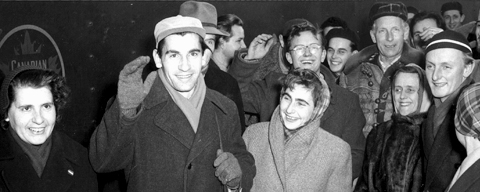
On the 50th anniversary of the arrival of the Sopron refugees to Canada, the spring 2007 issue of TREK magazine of the UBC Alumni Association has recently published Adrienne Watt’s story The Sopron Factor, which provides a detailed background to the events that brought the Sopron forest engineering faculty to UBC.

The Sopron Factor
by Adrienne Watt
What began in 1957 with a pleading letter to UBC and the Canadian government resulted, 50 years later, in one of the most influential and respected academic forestry facilities in the world.
In the winter of 1956/57, three hundred students and professors from the forest engineering faculty at the University of Sopron, and their dependants, fled Hungary and came to Canada. The Hungarian Revolution of 1956 had failed, Russian troops occupied the country and many Hungarians, including the Sopron foresters, feared for their lives.
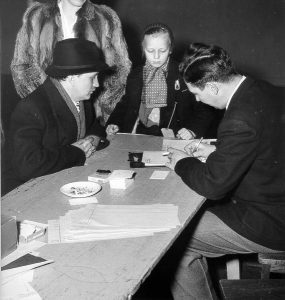 In fact, in 1956 and 1957 Canada accepted more than 38,000 Hungarian refugees. “The 56ers,” as they became known, had an impact on Canadian culture and, notably, on Canadian refugee policy. Their mass exodus from Hungary marked a shift in government policy that would open the doors for other refugees fleeing volatile political situations. And Canadians, including UBC, welcomed these refugees with open doors.
In fact, in 1956 and 1957 Canada accepted more than 38,000 Hungarian refugees. “The 56ers,” as they became known, had an impact on Canadian culture and, notably, on Canadian refugee policy. Their mass exodus from Hungary marked a shift in government policy that would open the doors for other refugees fleeing volatile political situations. And Canadians, including UBC, welcomed these refugees with open doors.
If you ask 56ers about their life in Hungary before the revolution they often seem at a loss for words. “It was tough but otherwise normal for an 18-20 year old student,” says Dr. Antal (Tony) Kozak, a third-year University of Sopron forestry student at the time of the revolution, and now a professor emeritus at UBC in the faculty of Forestry. “Life was very tough, we were very poor and we had no freedom. That was more disturbing than being poor. We didn’t have any personal or political freedom and we were aware of that.”
The Hungarian Revolution of 1956 was an unplanned nationwide revolt against the communist government of Hungary and its Soviet-enforced policies, lasting from October 23 until November 4, 1956. The uprising, centered in Budapest, began as a student demonstration and attracted thousands as it marched through central Budapest to the Parliament buildings. The news spread and disorder and violence erupted throughout the capital.
 The revolt moved quickly across Hungary, and the government fell. Thousands organized into militias, battling the State Security Police (ávh) and Soviet troops. Pro-Soviet communists and ávh members were executed or imprisoned, as former prisoners were released and armed. Spontaneous councils fought for municipal control from the communist party, and demanded political changes. The new government formally disbanded the ávh, declared its intention to withdraw from the Warsaw Pact and promised to re-establish free elections. By the end of October, fighting had almost ceased and a sense of normalcy began to return.
The revolt moved quickly across Hungary, and the government fell. Thousands organized into militias, battling the State Security Police (ávh) and Soviet troops. Pro-Soviet communists and ávh members were executed or imprisoned, as former prisoners were released and armed. Spontaneous councils fought for municipal control from the communist party, and demanded political changes. The new government formally disbanded the ávh, declared its intention to withdraw from the Warsaw Pact and promised to re-establish free elections. By the end of October, fighting had almost ceased and a sense of normalcy began to return.
In Sopron, events of the 1956 revolution were different from many other parts of Hungary since no Soviet troops were nearby. As in other cities with universities, the Student Revolutionary Committee took over the local municipal government, and played an important role in running the day to day activities of the city.
“Before the revolution began, we held secret meetings in Sopron,” says Dr. Kozak. “During the revolution one of the many tasks at the university was to receive goods from the Red Cross and other similar organizations in Austria. Sopron was close to the border, so the goods were brought to Sopron where we sorted them and distributed them. We transported medicine, blood and some food to Budapest, where it was most needed in the hospitals.”
However, on November 4, the Sopron students learned that Russian tanks were headed in their direction. The students were determined to defend the town with a number of antitank guns, which they knew how to operate as the result of compulsory military training.
“When we heard the Russian tanks were coming to Sopron, we went out with guns; we were trying to defend the city,” says Dr. Kozak. “Unfortunately the firing pins had been removed and the guns didn’t fire. We got scared and started to run. It was probably better for us, because many of us would have died.
 “About 60-70 per cent of the students and about half the faculty escaped to Austria. I left at about 4pm on the 4th and arrived in Austria around 9:30pm in a small village close to the border.”
“About 60-70 per cent of the students and about half the faculty escaped to Austria. I left at about 4pm on the 4th and arrived in Austria around 9:30pm in a small village close to the border.”
On November 4, a large Soviet force invaded Budapest, killing thousands of civilians. Organized resistance ceased by November 10, and mass arrests began. An estimated 200,000 Hungarians fled as refugees. By January 1957, the new Soviet-installed government had suppressed all public opposition. The actions of the Soviets alienated many people; however, it did strengthen Soviet control over Central Europe, furthering the notion that communism was both irreversible and absolute.
The Sopron students hoped that the move to Austria wouldn’t be permanent and that the United States would come to Hungary’s assistance and that there would be a free election. But the hopes of the students faded and by Christmas the outlook was bleak.
“In Austria we were put into camps,” says Dr. Kozak. “Austria handled well over 100,000 immigrants in about a month.”
The director (equivalent of dean) of the Sopron forestry school, Kalman Roller, asked the Austrians if the Sopron students could continue their education in Austria. “The Austrians said definitely ‘no’ because they were afraid of the reaction of the Soviets,” he says.
Roller then sent letters to more than 20 countries explaining their faculty’s special situation and pleading for assistance. The most generous response came from Canada, and as a result of the efforts of former cabinet ministers John W. Pickersgill and James Sinclair, arrangements were made for the Sopron group to continue their education at UBC. UBC became a haven for the students and faculty of the Sopron school of forestry. The UBC faculty of Forestry offered to “adopt” the Sopron school and guaranteed its maintenance for four years until the current students graduated. They also guaranteed that the education would be continued in Hungarian, gradually introducing English courses given by UBC professors.
Early in January 1957, two hundred students and 28 faculty members, as well as some 65 wives and children, were on their way to Canada to become the Sopron division of the faculty of Forestry at UBC. They traveled in two groups to Canada arriving in Halifax in January, then making their way by train to Abbotsford. Their first visit to UBC was during the first week of February 1957.
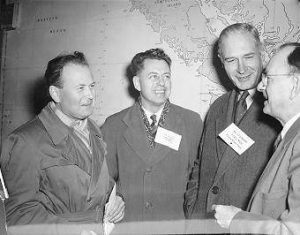 The group then journeyed to Powell River where the Powell River Company housed them in a construction camp. The refugees began intensive study in English and heard lectures on forestry, economics and North American culture from UBC professors, government and industrial specialists. They would stay there until September as it was too late in the term to start classes. Many of the students obtained summer jobs before they started their classes at UBC the following September.
The group then journeyed to Powell River where the Powell River Company housed them in a construction camp. The refugees began intensive study in English and heard lectures on forestry, economics and North American culture from UBC professors, government and industrial specialists. They would stay there until September as it was too late in the term to start classes. Many of the students obtained summer jobs before they started their classes at UBC the following September.
The Sopron group was grateful for their acceptance in Canada and they learned very quickly that this type of immigration and faculty adoption was a first in Canada. “Our first impression of Canada was that it was really different. It was a free country; it was almost impossible for us to imagine that a free country could exist,” says Dr. Kozak.
However, it’s not hard to imagine the challenges that a large group of poor immigrants might face when transplanted into a new culture. The refugees didn’t speak the language, they came from a different political landscape, and they came with their own traditions, with very few belongings and little money. Uprooted from their homeland, some without their families, their arrival in Canada and at UBC wasn’t without struggle.
“The biggest problem was the language,” says Dr. Kozak. “The Canadians were very kind to us, we really enjoyed their hospitality, but it took about three years for us to communicate well and not be scared when we attended a party or social function.”
The Sopron foresters did overcome their struggles and began to flourish in Canada and at UBC and Canadians, in turn, were introduced to the wonders of chicken paprika, cabbage rolls and poppyseed cakes.
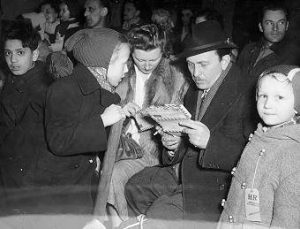 By May 1961 the last class graduated from the Sopron Division, making the total number of graduates 141. Most of the Sopron refugees received their Canadian citizenship in 1962. A few members of the group returned to Hungary, but the majority stayed here. By December, 1966, over 80 per cent of the graduates still lived in Canada. Thirty two per cent obtained a post graduate degree, an unusually high proportion by North American standards.
By May 1961 the last class graduated from the Sopron Division, making the total number of graduates 141. Most of the Sopron refugees received their Canadian citizenship in 1962. A few members of the group returned to Hungary, but the majority stayed here. By December, 1966, over 80 per cent of the graduates still lived in Canada. Thirty two per cent obtained a post graduate degree, an unusually high proportion by North American standards.
The Sopron group still remains in regular touch and meets once a year. In June of this year, survivors will hold their 50th anniversary celebration.
Many of the Hungarian graduates took up positions in academic research centres in North America, and the great number of publications written by them is a testament to their influence on the practice of forestry in North America. Others went to work for private companies, governments and consulting firms, and influenced both the production and marketing of forest products worldwide.
The changes that occurred in forestry in British Columbia in the last half of the 20th century are helpful to understanding the broader influence of the Sopron Foresters in Canada. Due to the near total deforestation of Europe in earlier centuries, European forestry practices became more focused on husbandry than clear cutting and these practices, in part due to the Sopron foresters, became incorporated into British Columbian forestry practices.
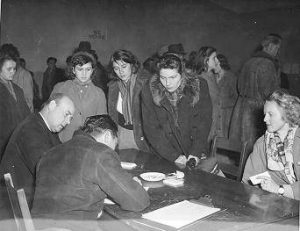 One thing for sure is the link between the two university faculties remains strong. Two Sopron faculty members and two Sopron students ended up teaching at UBC and Dr. Kozak has returned to Sopron to teach on five occasions. And currently, the University of Sopron, in cooperation with UBC, is developing an English language bsc in Forestry. The new program will likely begin in September 2008 and UBC will receive visiting lecturers so that the Sopron professors can learn and practice English in Canada.
One thing for sure is the link between the two university faculties remains strong. Two Sopron faculty members and two Sopron students ended up teaching at UBC and Dr. Kozak has returned to Sopron to teach on five occasions. And currently, the University of Sopron, in cooperation with UBC, is developing an English language bsc in Forestry. The new program will likely begin in September 2008 and UBC will receive visiting lecturers so that the Sopron professors can learn and practice English in Canada.
Dr. Kozak is demure in his assessment of the Sopron factor, but there is a discernable note of pride in his voice when he speaks. “If we examine the changes that occurred in bc forestry practices from the early 60s up until now, we notice a significant change for the better. No, there is no scientific proof that 100 or so Hungarian foresters played an important role in these changes, but we would like to believe that we did. However, the affect on UBC I am sure is positive,” he says. ¤
Adrienne Watt is a Communications Coordinator with UBC Alumni Affairs.
Sopron 50th Anniversary Celebration – June 2007
To mark the 50th anniversary of the arrival of the Sopron Forestry School to UBC and the significant contribution made by the Sopron Alumni to British Columbia, Canada and UBC, a number of special events are being planned by the Faculty of Forestry this spring.
On June 7 a scientific-professional symposium entitled “Looking Back, Moving Forward: The Legacy and Future of Hungarian and Canadian Forestry” will examine some of the professional experiences and scientific research that characterizes the legacy of Hungarian forestry in Canada. The second day will be a formal celebration with the Sopron alumni and their families, including cultural demonstrations and traditional food.
For further information, please contact Sandra Schinnerl at 604.822.9627 or sandra.schinnerl@ubc.ca.
http://www.alumni.ubc.ca/trekmagazine/17-spring2007/thesopronfactor.php

50th Anniversary Sopron-UBC Celebration
Join Us!
UBC-Sopron 50th Anniversary Celebration
June 14-16th, 2007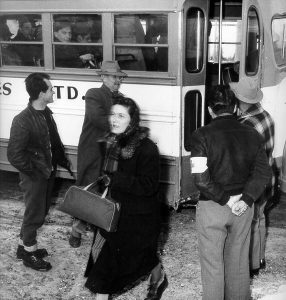
The University of British Columbia is planning a 50th Anniversary Sopron Celebration to mark the arrival of the Sopron Forestry School students and faculty to UBC in 1957. We wish to recognize the alumni and celebrate this special part of UBC’s history. We hope that you and your family will plan on joining us. The celebration day will take place on Thursday June 14th, 2007 and will welcome all Sopron alumni, their families, the university community, and the general public.
In commemoration of the event, we will be celebrating with an open house that will include traditional Hungarian music, dance, displays, and much much more!
Please keep checking back for updated information.
SCHEDULE OF EVENTS June 14th-16th 2007
JUNE 14th 2007
Day of Celebration & Open House
11:00am – 12:30pm
Opening Ceremony
A choral ensemble, dance performance, Sopron procession and welcome by the University’s President, Professor Toope, and the Ambassador to Hungary, his Excellency Dr. Pal Vastagh, are all part of the morning’s activities.
12:30pm-2:00pm
Traditional Hungarian Lunch
Be our guest for a traditional Hungarian lunch while exploring the numerous visual displays, paintings, folk art, traditional dress, and alumni exhibits in the Forest Sciences Centre Atrium.
Hungarian Exodus Exhibit
Discover the past through a comprehensive exhibit on loan from the Rakoczi Foundation that commemorates and documents the lives, struggles and achievements of the 38,000 Hungarian refugees who immigrated to and settled in Canada following the Hungarian Revolution of 1956.
Faculty of Forestry Open House
Tour and visit research labs, and learn about current research being conducted within the Faculty of Forestry.
2:00pm-2:45pm
Sharing the history: a video presentation
A special film presentation and personal stories about the Sopron alumni and their experiences coming to Canada and UBC.
2:45pm-3:30pm
Recognition of scientific and professional accomplishments and a special presentation to UBC Sopron Alumni
3:30pm-4:30pm
Cake and coffee served in the FSC Atrium
UBC Forestry Open House continues
JUNE 15th 2007
“Looking back, moving forward: The legacy and future of Canadian and Hungarian forestry”
9:00am – 5:00pm
Scientific-Professional Symposium
This symposium highlights both the scientific and the professional contributions made by the UBC Sopron alumni and those that have worked with them. There will also be contributions from members of the University of West Hungary to highlight the future of Hungarian Forestry and from others who can speak of the impact made by the Sopron UBC Alumni.
JUNE 16th 2007
6:00pm
Hungarian Banquet
Join the Sopron Alumni and their families for a traditional Hungarian dinner. Proszit!
http://www.forestry.ubc.ca/SopronStory/tabid/1068/Default.aspx


 Kalman Roller has published an article himself, an article entitled Hungarian experiment-Propaganda failed to create a new man in the April 1957 issue of UBC Reports on the conditions and challenges that the Sopron refugees had to overcome: click here (article is on page 2).
Kalman Roller has published an article himself, an article entitled Hungarian experiment-Propaganda failed to create a new man in the April 1957 issue of UBC Reports on the conditions and challenges that the Sopron refugees had to overcome: click here (article is on page 2).
Another resource available in the UBC digital archives is the UBC Alumni CHRONICLE of 1982 which contains a section devoted to Memories of Sopron-Twenty five years after Exile and a detailed, well-researched article MEMORIES of SOPRON-Revolution, Exile and a New LIfe at UBC by Dianne Logson. Click here to view it (article is on pages 12, 13 and 14).
For anyone interested in doing first hand research on the topic, the Library and Archives Canada’s Kalman Joseph Roller fonds include correspondence, reports and other documentation relating to the transfer of the Hungarian Forestry Faculty of Sopron University to the University of British Columbia between 1956 and 1957, as well as two sound recordings: the first records a 1987 Toronto event that commemorated the 1956 Hungarian Revolution. The second, in Hungarian, records the proceedings of a 1991 celebration to mark the 30th anniversary of the graduation of the last Sopron student from the University of British Columbia. For more information on these materials, as well as on on Kalman Roler and his book The Sopron Chronicle, details about the Sopron Alumni Association as well as its journal, KAPOCS/ Bond, please consult the web site of Library and Archives Canada at the following link: Here.
